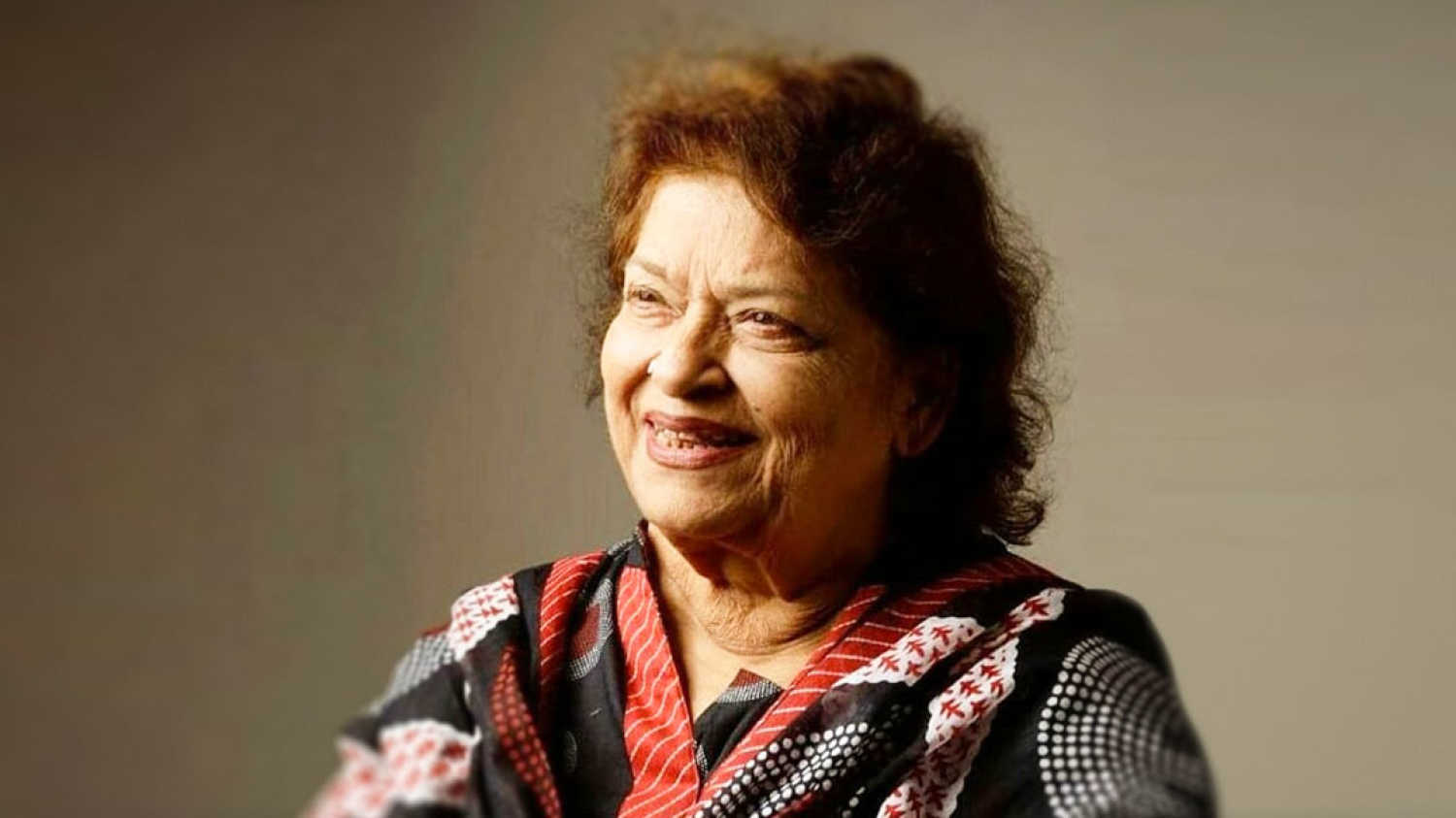The documentary takes us behind the glamour of the silver screen to lay bare the gruelling struggle and sheer determination of Saroj Khan to emerge as Hindi cinema's pre-eminent choreographer.
The Saroj Khan Story: Loving portrait of an incomparable talent
New Delhi - 04 Jul 2020 22:06 IST


Sukhpreet Kahlon
Across India, millions of people dance to Hindi film songs, trying to match their steps with the moves they have seen their favourite stars execute on the big screen. Ace choreographer Saroj Khan gave us many of the moves that define 'Bollywood' dance today. Melding folk dance with modern movements, Khan, who died yesterday of cardiac arrest, was a force of nature with her encyclopaedic knowledge of the art form and her appetite for improvisation and creativity.
Directed by Nidhi Tuli and produced by the Public Service Broadcasting Trust (PSBT), the observational documentary The Saroj Khan Story takes us into the life of the veteran to foreground her struggle, hardships, grit and determination.
Like countless others, Saroj Khan's family, too, was displaced at the time of Partition and found refuge in a chawl in Mahim, Bombay. She began her career in films as a child artiste and then became a group dancer. Watch her play Radha to Baby Naaz's Krishna in a song from Aagosh (1953) here:
Renowned dance master B Sohanlal took the girl with expressive eyes, graceful movements and an uncanny ability to grasp moves simply by observation, under his wing. Thus, she became an assistant choreographer at the age of 12 and Vyjayanthimala was the first star she choreographed. Saroj Khan stayed on as assistant till 1973.
Saroj Khan (1948–2020): Graceful, talented starmaker who had the magic touch
With a passion for dance that subsumes her very being, we see Khan in the documentary watching her dancers like a hawk, never missing a slip-up. While the film highlights her immense talent, it also takes us behind the exuberance of dance and the glamour of the silver screen to see Saroj Khan's gruelling struggle and an unhappy past where she was beset by one turbulent moment after another in her personal life.
There are several revelatory moments in the film, like filmmaker N Chandra revealing that it was after watching the iconic 'Ek Do Teen' from Tezaab (1988) that Filmfare instituted an award for Best Choreographer that was won by her! At the awards ceremony, Subhash Ghai, whose Hero (1983) was Khan's first big hit, handed her the trophy saying, “Three cheers to this little fat girl who dances better than many stars!”
The many hit songs and memorable dance numbers bear testimony to the unsurpassed artistry of Khan's work. Her rich legacy will live on through her work. As Sanjay Leela Bhansali says in the film, “You don’t find them [like her] anymore.” Watch The Saroj Khan Story here:






